Holistic SEO
SEO for Local Art Galleries: Drawing Attention to Your Art Online

Are you exhausted because your art gallery isn’t getting the online attention it deserves?
Well, we’ve got some good news for you! In this article, we’re going to delve into the world of SEO and show you how it can make a world of difference for your local art gallery.
We’ll cover everything from understanding local search rankings to optimizing your website for search engines.
So, sit back, relax, and get ready to draw attention to your art online!

Key Takeaways
- Optimizing SEO increases online visibility and attracts potential art enthusiasts.
- Leveraging online directories and review platforms boosts gallery’s visibility and credibility.
- Focusing on relevance, proximity, and prominence improves chances of appearing in top positions in local search results.
- Engaging visual storytelling through high-quality content and various mediums helps draw attention to the art online.
The Importance of SEO for Art Galleries
In our experience, optimizing SEO is crucial for art galleries to increase their online visibility and attract potential art enthusiasts. Implementing local SEO strategies for art galleries is a highly effective way to ensure that your gallery appears in relevant search results when potential customers are looking for art in your area.
By targeting specific keywords related to your gallery and location, you can improve your website’s ranking on search engine result pages (SERPs) and drive more organic traffic to your site.
One important aspect of local SEO for art galleries is leveraging online directories and review platforms. These platforms, such as Google My Business, Yelp, and TripAdvisor, allow you to create a business profile and showcase your gallery’s information, including location, contact details, and customer reviews. By optimizing your profiles on these platforms and actively soliciting positive reviews from satisfied visitors, you can’t only boost your gallery’s visibility but also build trust and credibility with potential customers.
Furthermore, online directories and review platforms often have a strong presence in search engine results, making it more likely for your gallery to appear in relevant local searches. By ensuring that your gallery’s information is accurate and up-to-date on these platforms, you increase the chances of attracting potential customers who are actively looking for art in your area.

Understanding Local Search Rankings
To understand local search rankings, we need to analyze the factors that influence how search engines prioritize and display relevant results to users seeking art galleries in their area. Local search algorithms play a crucial role in determining the visibility of your art gallery in local search results.
Here are three key factors that affect local search rankings:
- Relevance: Search engines evaluate how well your art gallery matches the user’s search query. This includes factors such as the content on your website, the keywords used, and the accuracy of your business information.
- Proximity: The proximity of your art gallery to the user’s location is another important factor. Search engines prioritize businesses that are closer to the user, as they’re more likely to provide a convenient experience.
- Prominence: The prominence of your art gallery online is determined by factors such as the number of customer reviews, the quality of your website’s backlinks, and your overall online reputation. Search engines consider these factors to determine the credibility and popularity of your gallery.
Understanding these factors will help you optimize your website and improve your local search rankings. By focusing on relevance, proximity, and prominence, you can increase your chances of appearing in top positions in local search results and attract more visitors to your art gallery.
Optimizing Your Website for Search Engines
When it comes to optimizing your website for search engines, there are a few key points to keep in mind.

Firstly, incorporating relevant keywords throughout your website’s content can greatly improve your search engine ranking.
Additionally, ensuring that your website is listed on local directories and listings can help increase your visibility in local searches.
Lastly, having a mobile-friendly website design is essential in today’s digital age, as more and more users are accessing websites from their smartphones and tablets.
Keywords for Better Ranking
We optimize our website for search engines by strategically incorporating relevant keywords throughout our content. This helps to improve our website’s ranking and visibility in search engine results. When conducting keyword research, we identify the most relevant and popular keywords for our art gallery. We also focus on using long tail keywords, which are more specific and have less competition.
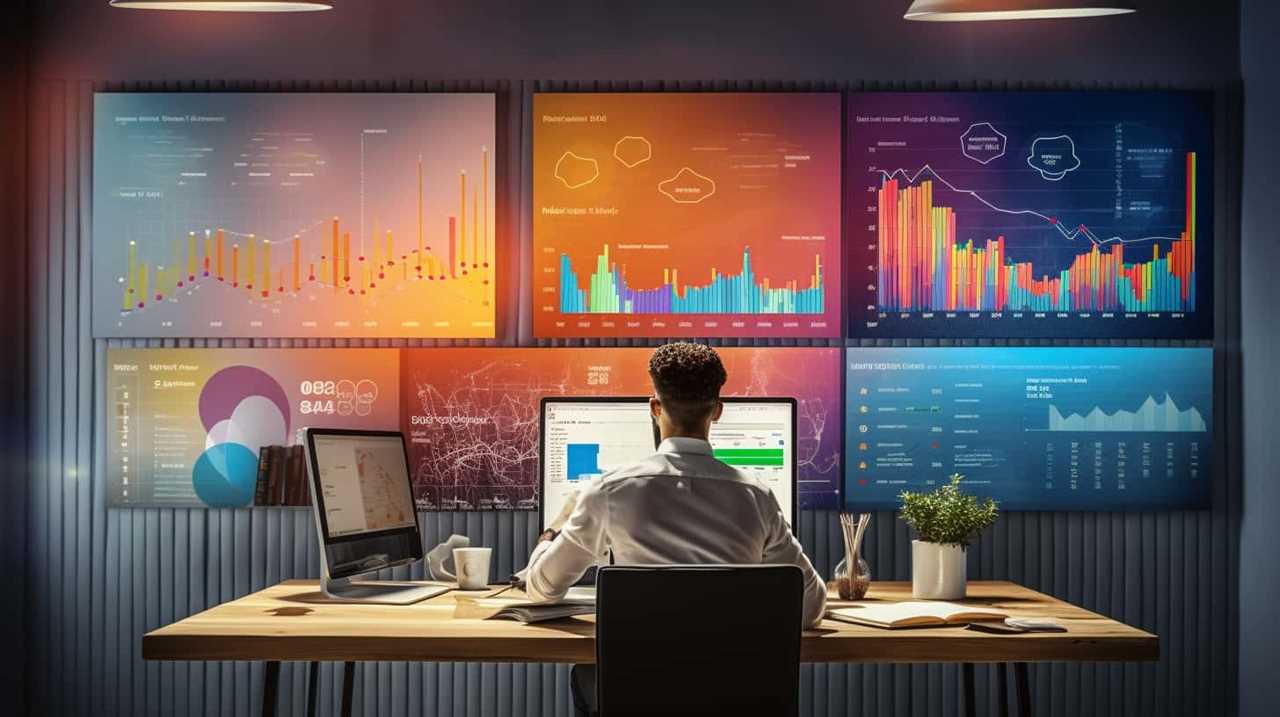
By incorporating these keywords into our website’s content, meta tags, titles, and headings, we increase the likelihood of our website appearing in relevant search queries. This allows us to attract more targeted traffic and potential customers to our art gallery website.
In the subsequent section, we’ll explore the importance of local directories and listings in further boosting our online presence and attracting local customers.
Local Directories and Listings
In order to optimize our website for search engines, we focus on utilizing local directories and listings to enhance our online presence and attract more potential customers to our art gallery.
Local directories and listings are online platforms that provide information about local businesses, including art galleries, to users searching for specific products or services in their area. By listing our gallery in these directories, we increase our visibility to individuals interested in local art events and promoting art online.

These directories often allow us to provide detailed information about our gallery, such as our location, contact details, and a description of our offerings. This not only helps potential customers find us easily but also improves our search engine rankings, ultimately leading to increased traffic and potential sales.
Mobile-Friendly Website Design
To further enhance our online presence and attract more potential customers, we focus on optimizing our website for search engines through mobile-friendly website design. A responsive website design allows our site to adapt to different screen sizes, ensuring that it looks and functions well on both desktop and mobile devices. This not only improves user experience but also boosts our search engine rankings.
Additionally, we prioritize creating a user-friendly interface that’s easy to navigate and understand. This includes clear and concise menus, intuitive navigation, and fast loading times. By incorporating these elements into our website design, we make it easier for search engines to crawl and index our site, increasing our visibility to potential customers searching for local art galleries.
Conducting Keyword Research for Local Art Galleries
Regularly conducting keyword research is essential for local art galleries to optimize their online presence and attract more visitors.

Keyword research involves identifying the words and phrases that potential visitors are using when searching for art galleries in their local area. By incorporating these keywords into their website content, art galleries can improve their visibility in search engine results and increase their chances of being discovered by art enthusiasts.
To begin the keyword research process, art galleries should start by brainstorming a list of relevant keywords and phrases related to their gallery, such as ‘art gallery marketing’ and ‘local art promotion.’ They can also use online tools like Google Keyword Planner and Moz Keyword Explorer to identify additional keywords that are popular among their target audience.
Once a list of keywords has been compiled, art galleries should analyze their competition to see which keywords are being used by other galleries in their area. This will help them identify any gaps or opportunities in the market that they can capitalize on.
Art galleries should also consider the search intent behind each keyword. Are people searching for information about local art events? Or are they looking to buy artwork online? By aligning their keywords with the search intent of their target audience, art galleries can create content that’s more likely to attract visitors and convert them into customers.

Creating High-Quality Content to Attract Visitors
When it comes to attracting visitors to your local art gallery, creating high-quality content is crucial.
One way to do this is by using relevant keywords in your website’s content to optimize it for search engines.
Additionally, engaging visual storytelling through images and videos can captivate your audience and showcase the unique experience your gallery offers.
Lastly, don’t underestimate the power of utilizing local influencers to promote your gallery and drive more traffic to your website.
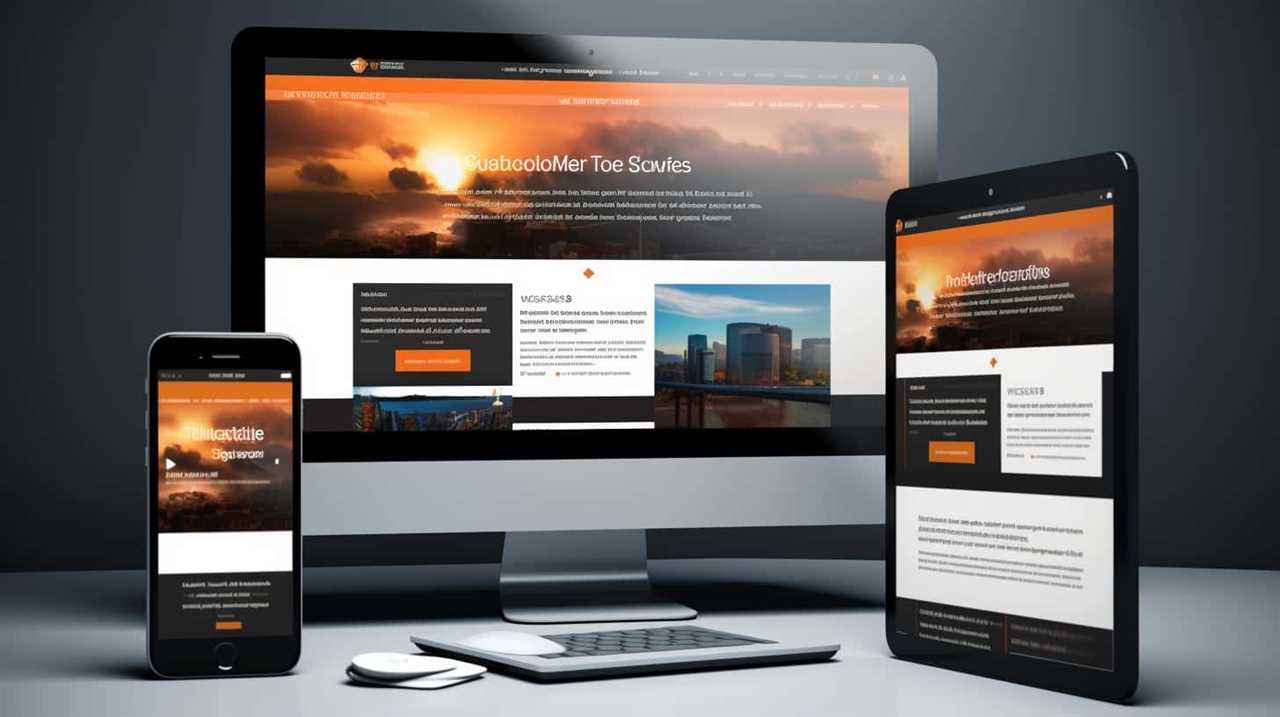
Relevant Keywords for SEO
In order to attract visitors, we actively incorporate relevant keywords into our high-quality content for SEO purposes. By conducting competitor analysis, we can identify the keywords that are driving traffic to our competitors’ websites and incorporate them into our own content. This helps us to better understand what our target audience is searching for and allows us to optimize our content accordingly.
Implementing on-page optimization techniques, such as optimizing meta tags, headings, and image alt tags, further enhances our SEO efforts. These techniques help search engines understand the context and relevance of our content, increasing our chances of ranking higher in search engine results pages.
Engaging Visual Storytelling
To attract visitors, we engage in visual storytelling by creating high-quality content that captivates and draws attention to our art online.
Engaging visual storytelling is an essential aspect of creative content marketing for local art galleries. Through compelling imagery, videos, and narratives, we can effectively communicate the story behind our art and connect with our audience on a deeper level.
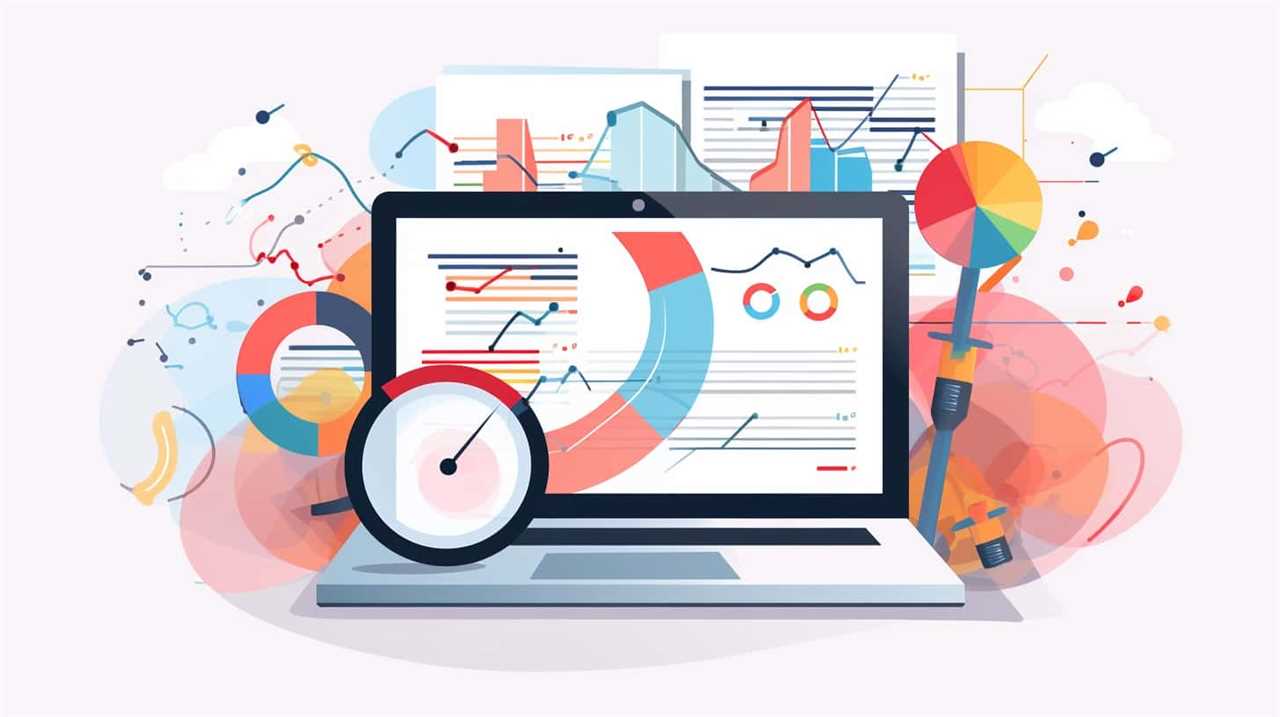
By utilizing various mediums, such as blog posts, social media posts, and virtual tours, we can showcase the unique features and characteristics of our artwork. This not only helps to generate interest and curiosity but also establishes a strong brand identity for our gallery.
Through engaging visual storytelling and creative content marketing, we can attract visitors, increase online visibility, and ultimately drive more traffic to our art gallery.
Utilizing Local Influencers
We collaborate with local influencers to create high-quality content that attracts visitors to our art gallery. By partnering with influential individuals in our community, we’re able to tap into their existing audience and gain exposure to a wider audience. Here’s how we utilize local influencer collaborations to maximize our impact:
- Identifying relevant influencers: We carefully select influencers who’ve a strong presence in the local art scene and align with our gallery’s aesthetic and values.
- Creating engaging content: We work closely with influencers to develop captivating content that showcases our gallery, including behind-the-scenes videos, artist interviews, and exclusive previews.
- Measuring influencer impact: We track metrics such as website traffic, social media engagement, and event attendance to evaluate the success of our influencer collaborations and make data-driven decisions for future partnerships.
Building Backlinks and Online Connections
As local art galleries, our online presence can be greatly enhanced through the strategic building of backlinks and online connections. Link building strategies play a crucial role in improving our website’s visibility and search engine rankings. By obtaining high-quality backlinks from reputable websites, we can increase our online authority and drive more traffic to our gallery’s website.

One effective link building strategy is to reach out to other local businesses, art organizations, and artists in our community. By collaborating with them and exchanging links, we can create a network of online connections that will benefit everyone involved. Additionally, we can leverage social media platforms to build relationships with influential individuals in the art industry. Engaging with them through social media interactions, sharing their content, and mentioning them in our own posts can help us establish valuable online connections.
Furthermore, participating in online forums, art communities, and discussion boards can also contribute to building backlinks and online connections. By sharing our knowledge and expertise, answering questions, and providing valuable insights, we can establish ourselves as trusted authorities in the art world. This can result in others linking back to our website and referring to us as a reliable source of information.
Utilizing Social Media for Art Promotion
Regularly posting and engaging on social media platforms is essential for promoting our art and increasing online visibility. Here are three ways we can utilize social media to effectively promote our art:
- Collaborative partnerships: By collaborating with other artists or art-related businesses, we can tap into their existing audience and expand our reach. This can include joint social media campaigns, cross-promotions, or even hosting joint events or exhibitions. Collaborative partnerships not only help us gain exposure to new audiences but also foster a sense of community within the art world.
- Influencer collaborations: Working with influencers who’ve a strong following in the art niche can greatly amplify our online presence. By partnering with influencers, we can leverage their credibility and reach to showcase our art to their engaged audience. This can be done through sponsored posts, influencer takeovers, or even influencer-created content featuring our art.
- Engaging with our audience: Social media provides a unique opportunity to connect directly with our audience. By responding to comments, messages, and mentions, we can build meaningful relationships and create a loyal fan base. Additionally, actively participating in relevant art communities and using relevant hashtags can help us attract new followers who are interested in our art.
Implementing Local SEO Strategies
Now let’s talk about implementing local SEO strategies to draw attention to your art online.

One important aspect is targeting local keywords that potential customers might use when searching for art galleries in your area.
Additionally, optimizing your Google My Business listing with accurate and up-to-date information will help improve your visibility in local search results.
Lastly, encouraging online reviews from satisfied customers can boost your credibility and attract more visitors to your gallery.
Targeting Local Keywords
We actively implement local SEO strategies by targeting specific keywords that are relevant to our local art gallery. By focusing on local keywords, we increase our website visibility and attract potential customers who are looking for art in our area.

Here are three important reasons why targeting local keywords is crucial for our art gallery:
- Relevance: When we use local keywords in our website content, meta tags, and URLs, we align our online presence with the local art scene. This helps search engines understand that our website is relevant to people searching for art in our area.
- Competition: By targeting local keywords, we can compete with other art galleries in our region. We can optimize our website for specific neighborhoods, landmarks, or events, making it easier for potential customers to find us.
- Targeted Traffic: Local keywords attract highly targeted traffic to our website. Instead of trying to rank for generic art-related keywords, we can focus on capturing the attention of people who are actively looking for art in our specific location.
Optimizing Google My Business
To optimize our local SEO strategies, we implement effective techniques for Google My Business. One of the key aspects of optimizing Google My Business is optimizing Google Maps. This involves ensuring that our art gallery is listed accurately on Google Maps, with the correct address, phone number, and website URL.
Additionally, we focus on local citation management, which involves ensuring that our art gallery is listed consistently and accurately across various online directories and platforms. This helps to improve our online visibility and credibility.
By optimizing Google My Business, we can attract more local customers and increase foot traffic to our art gallery.

In the next section, we’ll discuss the importance of getting online reviews and how it can further enhance our local SEO efforts.
Getting Online Reviews
Implementing local SEO strategies includes actively seeking online reviews to enhance our art gallery’s online presence and attract more local customers. Online reviews not only contribute to our online reputation but also play a crucial role in encouraging user-generated content.
Here are three reasons why online reviews are essential for our art gallery:
- Social Proof: Positive reviews from satisfied customers act as social proof, building trust and credibility among potential customers. When people see that others have had a positive experience with our gallery, they’re more likely to visit and engage with our art.
- Increased Visibility: Online reviews can improve our search engine rankings, making it easier for local customers to find our gallery. Search engines consider online reviews as a ranking factor, so the more positive reviews we have, the higher our chances of appearing in search results.
- Customer Insights: Online reviews provide valuable feedback and insights into what our customers like and dislike about our gallery. By listening to their feedback, we can make necessary improvements and tailor our offerings to better meet their needs.
Tracking and Analyzing Your Website’s Performance
In order to effectively monitor and assess our website’s performance, it is essential to utilize tracking and analytics tools. These tools provide valuable insights into the traffic, engagement, and overall success of our website. By analyzing the data collected, we can identify areas for improvement and make informed decisions to optimize our online presence.

One of the most popular website analytics tools is Google Analytics. It provides a comprehensive view of our website’s performance, including metrics such as the number of visitors, their geographic location, the pages they visit, and the time they spend on our site. This information allows us to understand our audience better and tailor our content to their preferences.
Another important aspect of performance tracking is monitoring the conversion rate. This measures the percentage of website visitors who take a desired action, such as making a purchase or filling out a contact form. By tracking the conversion rate, we can identify any bottlenecks in our sales funnel and optimize our website to increase conversions.
To give you a better understanding, here is a table summarizing the key metrics we should track and analyze using website analytics tools:
| Metric | Description |
|---|---|
| Number of visitors | Total number of people who visit our website |
| Bounce rate | Percentage of visitors who leave the site after viewing one page |
| Average session duration | Average amount of time visitors spend on our site |
| Conversion rate | Percentage of visitors who take a desired action |
| Top referral sources | Websites that drive the most traffic to our site |
| Most popular pages | Pages with the highest number of views |
Leveraging Online Directories and Review Platforms
We can maximize our online visibility by utilizing online directories and review platforms. These platforms provide valuable opportunities for local art galleries to showcase their work and attract potential customers.

Here are three ways leveraging online directories and review platforms can benefit art galleries:
- Increased visibility: By listing your gallery on popular online directories such as Google My Business, Yelp, and TripAdvisor, you can ensure that your gallery appears in relevant search results. This increases your chances of being discovered by art enthusiasts in your local area.
- Enhanced online reputation management: Online directories and review platforms allow customers to leave reviews and ratings for your gallery. Positive reviews can help build trust and credibility, while negative reviews provide an opportunity for you to address any concerns and improve your gallery’s reputation. Regularly monitoring and responding to reviews shows that you value customer feedback and are committed to providing a positive experience.
- Social proof and word-of-mouth marketing: Positive reviews and ratings on online directories can serve as social proof, influencing potential customers to visit your gallery. Additionally, customers who’ve had a positive experience are likely to share their recommendations with friends and family, further boosting your gallery’s visibility and reputation.
Engaging With Your Local Art Community
To foster a sense of community and collaboration, we actively engage with our local art community. We believe that art isn’t just about creating and showcasing individual works, but also about building connections and supporting each other.
One way we achieve this is through collaborative exhibitions, where we partner with other local artists and galleries to create unique and diverse showcases. These exhibitions allow us to showcase a variety of artistic styles and mediums, and provide an opportunity for artists to collaborate, share ideas, and learn from one another.
In addition to collaborative exhibitions, we also take pride in hosting local artist showcases. These events provide a platform for emerging and established artists in our community to display their work and gain exposure. It allows us to celebrate the talent and creativity that exists within our local art scene.

Staying Up-To-Date With SEO Trends and Best Practices
By staying informed about the latest SEO trends and best practices, we can ensure that our local art gallery draws attention to our art online and reaches a wider audience. In the ever-evolving world of SEO, it’s crucial to stay up-to-date with the latest trends and best practices to maintain a competitive edge.
Here are three key areas to focus on:
- Voice search optimization: With the rise of voice assistants like Siri and Alexa, optimizing your website for voice search is essential. Consider incorporating natural language keywords and long-tail phrases that people commonly use when speaking.
- User experience and website performance: A user-friendly website that loads quickly and provides a seamless experience is crucial for SEO. Ensure your website is mobile-responsive, has intuitive navigation, and is optimized for faster load times.
- Content relevance and quality: Crafting high-quality, relevant content is an important aspect of SEO. Make sure your website provides valuable information that engages visitors and encourages them to stay longer. Regularly update your content and incorporate relevant keywords to improve your search rankings.
Frequently Asked Questions
How Can I Optimize My Website for Search Engines to Improve My Art Gallery’s Online Visibility?
To improve our art gallery’s online visibility, we optimize our website design and focus on content marketing. By incorporating SEO techniques, we attract art enthusiasts and draw attention to our gallery.
What Are Some Effective Strategies for Building Backlinks and Online Connections to Boost My Art Gallery’s Seo?
To boost our art gallery’s SEO, we can effectively collaborate with other art related websites through guest blogging to build backlinks. Additionally, connecting with influential individuals in the art industry can gain online visibility for our gallery.

How Can I Leverage Social Media Platforms to Promote My Art Gallery and Attract More Visitors?
How can we leverage social media platforms to promote our art gallery and attract more visitors? Can partnering with local influencers help? What engaging content can we create to drive more visitors?
What Are Some Local SEO Strategies That I Can Implement to Target the Audience in My Area?
To target our local audience, we can implement local citation strategies and optimize our Google My Business listing. These tactics will increase our online visibility and draw attention to our art gallery within our community.
What Are the Best Practices for Tracking and Analyzing My Art Gallery’s Website Performance to Assess the Effectiveness of My SEO Efforts?
We track and analyze our art gallery’s website performance using website analytics. This helps us assess the effectiveness of our SEO efforts and make informed decisions to optimize our online presence.
Conclusion
In conclusion, if you want your local art gallery to stand out online, SEO is the paintbrush you need. By understanding search rankings, optimizing your website, conducting keyword research, and creating high-quality content, you can attract more visitors and increase your online presence.

Don’t forget to track and analyze your website’s performance, leverage online directories and review platforms, engage with your local art community, and stay up-to-date with SEO trends.
Remember, with a little SEO magic, your art can truly shine in the digital world.
Holistic SEO
Guide to Holistic SEO for Optimal Website Performance

Welcome to our detailed guide on Complete SEO for maximizing website performance.
Are you ready to master the art of driving organic traffic and improving your online presence?
In this article, we will delve into the importance of holistic SEO and provide you with practical on-page optimization techniques, off-page optimization strategies, and technical SEO best practices.
We will also explore how to measure and analyze your website’s performance to ensure continuous growth.
Get ready to take your website to the next level!
Key Takeaways
- User experience is crucial for website performance, leading to longer stay and higher conversion rates.
- Integrating social media enhances holistic SEO strategy, increasing audience engagement, brand awareness, and traffic.
- On-page optimization techniques, such as keyword research and content optimization, improve website visibility and ranking on search engine result pages (SERPs).
- Off-page optimization strategies, including guest blogging and backlink building, enhance website visibility and organic traffic.
Importance of Holistic SEO
In our experience, holistic SEO is vital for achieving optimal website performance. The role of user experience in holistic SEO can’t be overstated. When users have a positive experience on your website, they’re more likely to stay longer, explore further, and ultimately convert into customers. This is why it’s important to focus on elements such as page load speed, mobile responsiveness, and intuitive navigation.
Additionally, integrating social media into your holistic SEO strategy can have numerous benefits. Social media platforms provide an opportunity to engage with your audience, build brand awareness, and drive traffic to your website. By sharing valuable content and encouraging social sharing, you can increase your online visibility and attract more organic traffic.
As we transition into the subsequent section about on-page optimization techniques, it’s important to remember that a holistic SEO approach considers all aspects of your website to ensure maximum performance.
On-Page Optimization Techniques
To optimize your website’s performance, we’ll now delve into the subtopic of on-page optimization techniques. On-page optimization plays a crucial role in improving your website’s visibility and ranking on search engine result pages (SERPs).
Two key components of on-page optimization are keyword research and content optimization.
Keyword research involves identifying the most relevant and high-performing keywords that align with your website’s content and target audience. By conducting comprehensive keyword research, you can optimize your website’s content to increase its chances of ranking higher in search engine results.
Content optimization focuses on optimizing the various elements on your web pages, such as headings, meta tags, URLs, and image alt text, to make them more search engine friendly. This includes incorporating target keywords strategically throughout your content and ensuring it’s relevant, engaging, and well-structured.
Off-Page Optimization Strategies
We will now explore the effectiveness of incorporating off-page optimization strategies into our holistic SEO approach. Off-page optimization refers to the techniques used outside of our website to improve search engine rankings.
Two key strategies for off-page optimization are guest blogging and backlink building.
Guest blogging involves writing and publishing content on other websites within our industry. This allows us to showcase our expertise, reach a wider audience, and build valuable backlinks to our website.
Backlink building is the process of acquiring links from other websites that point back to our own. These links act as votes of confidence and authority, signaling to search engines that our website is trustworthy and relevant.
By implementing these off-page optimization strategies, we can enhance our website’s visibility, increase organic traffic, and improve search engine rankings.
It’s essential to have a well-rounded SEO approach that includes both on-page and off-page optimization techniques to achieve optimal website performance.
Technical SEO Best Practices
Continuing our exploration of effective off-page optimization strategies, let’s now delve into the realm of technical SEO best practices.
When it comes to optimizing your website for search engines, conducting an SEO audit is crucial. An SEO audit checklist can help ensure that all technical aspects of your website are in order. It involves assessing factors such as website speed, mobile-friendliness, URL structure, and metadata optimization.

Another important aspect of technical SEO is keyword research. By utilizing keyword research techniques, you can identify the most relevant and high-performing keywords to target on your website. This will help improve your website’s visibility and drive organic traffic.
Technical SEO plays a vital role in optimizing your website’s performance and ensuring that it’s easily discoverable by search engines.
Measuring and Analyzing Website Performance
As we delve into the realm of measuring and analyzing website performance, let’s explore the importance of utilizing data-driven insights to optimize our website for optimal results.
Website analytics play a crucial role in understanding how our website is performing and identifying areas for improvement. By analyzing metrics such as traffic sources, page views, bounce rate, and conversion rate, we can gain valuable insights into user behavior and preferences.
These insights allow us to make informed decisions about our website’s design, content, and marketing strategies. Monitoring conversion rate is especially important as it directly impacts our website’s effectiveness in achieving its goals, whether it’s generating leads, making sales, or increasing engagement.
Frequently Asked Questions
How Long Does It Take to See Results From Holistic SEO Efforts?
On average, it takes time to see results from holistic SEO efforts. Success is measured by tracking website performance over time. This guide provides insights on optimizing SEO for optimal website performance.
Can I Implement Holistic SEO Strategies on My Own, or Do I Need to Hire an SEO Agency?
Implementing holistic SEO strategies on your own or hiring an agency? Weigh the pros and cons. DIY can save money but requires time and expertise. Hiring an agency provides expertise but can be costly. Measure success through improved website performance.
What Are Some Common Mistakes to Avoid When Implementing Holistic Seo?
When implementing holistic SEO, it’s important to avoid common mistakes to ensure optimal website performance. By understanding the benefits of holistic SEO in e-commerce websites, we can achieve mastery in our SEO strategies.
Are There Any Specific Industries or Types of Websites That Can Benefit the Most From Holistic Seo?
In our experience, specific industries or types of websites that can benefit the most from holistic SEO include e-commerce, healthcare, and local businesses. Key factors to consider for successful implementation are keyword research, content optimization, and technical SEO.
How Does Holistic SEO Differ From Traditional SEO Practices?
Holistic SEO differs from traditional SEO practices in its focus on long-term success and a comprehensive approach. It emphasizes the benefits of optimizing all aspects of a website, including content, user experience, and technical elements, for optimal performance and search engine visibility.
What Are the Key Strategies to Achieve Full-Scale Website Optimization with Holistic SEO?
Implementing holistic seo website optimization requires a combination of key strategies. Firstly, conducting comprehensive keyword research to understand user intent is crucial. Next, optimizing on-page elements such as meta tags, headers, and content structure ensure search engines understand your website fully. Additionally, creating unique and valuable content, optimizing site speed, and prioritizing mobile responsiveness contribute to a holistic SEO approach. Building quality backlinks and monitoring analytics regularly further refine optimization efforts.
Conclusion
In conclusion, implementing holistic SEO is essential for achieving optimal website performance. By focusing on both on-page and off-page optimization techniques, as well as technical SEO best practices, you can boost your website’s visibility and organic traffic.
It’s like tending to a well-maintained garden, where each aspect contributes to the overall beauty and health of the plants. By measuring and analyzing website performance, you can continuously improve and refine your SEO strategy, ensuring long-term success.

Holistic SEO
Mastering Holistic SEO for Full-Scale Website Optimization

Are you prepared to master comprehensive SEO in order to improve your entire website? We are here to help you.
In this article, we’ll guide you through the fundamentals of holistic SEO, from keyword research and analysis to on-page and off-page optimization techniques.
We’ll also show you how to measure and analyze SEO performance to ensure maximum results.
Get ready to take your website to the next level and achieve true mastery in the world of SEO.
Let’s dive in.
Key Takeaways
- Content marketing strategies attract and engage the target audience.
- Thorough keyword research uncovers valuable keywords.
- User experience optimization enhances engagement and conversions.
- Mastering keyword research maximizes online visibility.
The Fundamentals of Holistic SEO
When implementing holistic SEO strategies, we prioritize understanding the fundamentals of optimizing a website for full-scale performance. One of the key aspects of holistic SEO is content marketing strategies. By creating valuable and relevant content, we can attract and engage our target audience while also improving our website’s visibility in search engine results. This involves conducting thorough keyword research, crafting compelling headlines, and optimizing our content with relevant keywords and meta tags.
Another fundamental aspect of holistic SEO is user experience optimization. It’s crucial to ensure that our website provides a seamless and enjoyable experience for users. This includes optimizing website speed, improving navigation and site structure, and making our content easily accessible and readable. By prioritizing user experience, we can enhance engagement, increase conversions, and improve overall website performance.
Keyword Research and Analysis
To continue our discussion on holistic SEO, let’s delve into the importance of keyword research and analysis for optimizing a website’s performance.
Keyword research is a critical step in understanding the search behavior of your target audience and identifying the most relevant and valuable keywords to target.
Here are four key reasons why keyword research and analysis are crucial for website optimization:
- Identify high-value keywords: By conducting competitive analysis and researching industry trends, you can uncover valuable keywords that have high search volume and low competition.
- Discover long tail keywords: Long tail keywords are more specific and less competitive, allowing you to target niche audiences and drive targeted traffic to your website.
- Optimize content: Keyword research helps you optimize your website content by strategically incorporating relevant keywords into your titles, headings, meta tags, and body content.
- Stay ahead of the competition: By continuously analyzing keywords and monitoring your competitors’ keyword strategies, you can stay ahead in the search rankings and attract more organic traffic.
Mastering keyword research and analysis is essential for achieving full-scale website optimization and maximizing your online visibility.
On-Page Optimization Techniques
Now let’s explore On-Page Optimization Techniques, which play a crucial role in enhancing a website’s performance and visibility.
On-page optimization focuses on optimizing individual web pages to improve their search engine rankings and attract more organic traffic. One key aspect of on-page optimization is content optimization, which involves creating high-quality, relevant, and keyword-rich content that resonates with your target audience.
This includes using appropriate headings, subheadings, and incorporating relevant keywords naturally throughout the content. Another important on-page optimization technique is optimizing meta tags, such as title tags and meta descriptions.
These tags provide a concise summary of the page’s content and help search engines understand what the page is about. By optimizing these elements, you can increase the chances of your website ranking higher in search engine results.
In the next section, we’ll delve into off-page optimization strategies to further enhance your website’s visibility and authority.
Off-Page Optimization Strategies
Continuing from the previous subtopic, we can explore off-page optimization strategies to further enhance our website’s visibility and authority. Off-page optimization focuses on improving our website’s reputation and credibility through external factors. Here are four key strategies to consider:
- Link Building: Building high-quality backlinks from reputable websites can significantly improve our website’s search engine rankings. It’s important to focus on acquiring natural and relevant links that demonstrate our authority and expertise in our industry.
- Social Media Presence: Having an active and engaging presence on social media platforms can help increase brand awareness, drive traffic to our website, and improve search engine visibility. It’s crucial to create valuable content and engage with our audience to build a strong online community.
- Guest Blogging: Collaborating with influential bloggers or industry experts to publish guest posts on their websites can help us reach a wider audience and gain valuable backlinks. It’s essential to choose relevant and reputable websites that align with our niche.
- Online Reputation Management: Monitoring and managing our online reputation is crucial for building trust and credibility. Responding to customer reviews, addressing negative feedback, and actively managing our brand image can positively impact our website’s visibility and authority.
By implementing these off-page optimization strategies, we can enhance our website’s visibility, credibility, and ultimately improve our overall SEO performance.
In the next section, we’ll explore the importance of measuring and analyzing SEO performance to ensure continuous improvement.
Measuring and Analyzing SEO Performance
Measuring and analyzing SEO performance is essential for evaluating the effectiveness of our optimization efforts and identifying areas for improvement. Without proper tracking and analysis of SEO data, we would be blindly implementing strategies without knowing whether they are yielding the desired results. By monitoring key metrics such as organic traffic, keyword rankings, and conversion rates, we can gain valuable insights into the performance of our website and make informed decisions to drive better results.
In addition to tracking our own SEO performance, competitor analysis is also crucial for staying ahead in the game. By analyzing the SEO strategies of our competitors, we can identify opportunities and uncover areas where we can outperform them. This involves evaluating their keyword rankings, backlink profiles, and content strategies to gain a competitive edge.
To help visualize the importance of measuring and analyzing SEO performance, here is a table showcasing some key metrics and their significance:
| Metric | Significance |
|---|---|
| Organic Traffic | Indicates the amount of traffic generated through search engines, reflecting the reach of our website. |
| Keyword Rankings | Shows how well our website ranks for targeted keywords, indicating visibility and competitiveness. |
| Conversion Rates | Measures the percentage of visitors who take desired actions, providing insights into website effectiveness. |
Frequently Asked Questions
What Is the Impact of Holistic SEO on Website Loading Speed?
The impact of holistic SEO on website loading speed is significant. By optimizing various elements such as code, images, and server response time, holistic SEO improves website performance, resulting in faster loading times and better rankings.
How Can I Optimize My Website for Voice Search Using Holistic SEO Techniques?
To optimize our website for voice search, we employ holistic SEO techniques. By focusing on keyword research, mobile optimization, and natural language content, we ensure our site is primed for voice search queries.
Are There Any Specific SEO Techniques for Optimizing Mobile Websites?
Yes, there are specific SEO techniques for optimizing mobile websites. A mobile first approach and responsive design are crucial. By prioritizing mobile users and ensuring a seamless experience, you can improve search rankings and overall website performance.
Can You Provide Examples of Successful Holistic SEO Strategies Implemented by Major Brands?
Successful holistic SEO strategies implemented by major brands showcase the importance of website loading speed. These brands prioritize optimization techniques such as mobile responsiveness, quality content creation, backlink building, and user experience enhancement.
How Does Holistic SEO Contribute to Improving User Experience on a Website?
Improving website usability and enhancing content relevance are key aspects of holistic SEO. By optimizing user experience, we ensure that visitors find what they need quickly and easily, increasing engagement and conversions.
What is the Difference Between Comprehensive SEO and Holistic SEO?
When it comes to digital marketing strategies, understanding the difference between comprehensive SEO and holistic SEO is crucial. While comprehensive SEO focuses on optimizing specific elements of a website to improve its search engine rankings, holistic SEO takes a broader approach and encompasses all aspects of an online presence, including content marketing. By integrating comprehensive seo in content marketing efforts, businesses can ensure their strategies align with search engine algorithms and reach a wider audience.
Conclusion
In conclusion, mastering holistic SEO is the ultimate key to unlocking full-scale website optimization. By seamlessly integrating keyword research, on-page optimization techniques, and off-page optimization strategies, we can achieve remarkable results in our SEO performance.
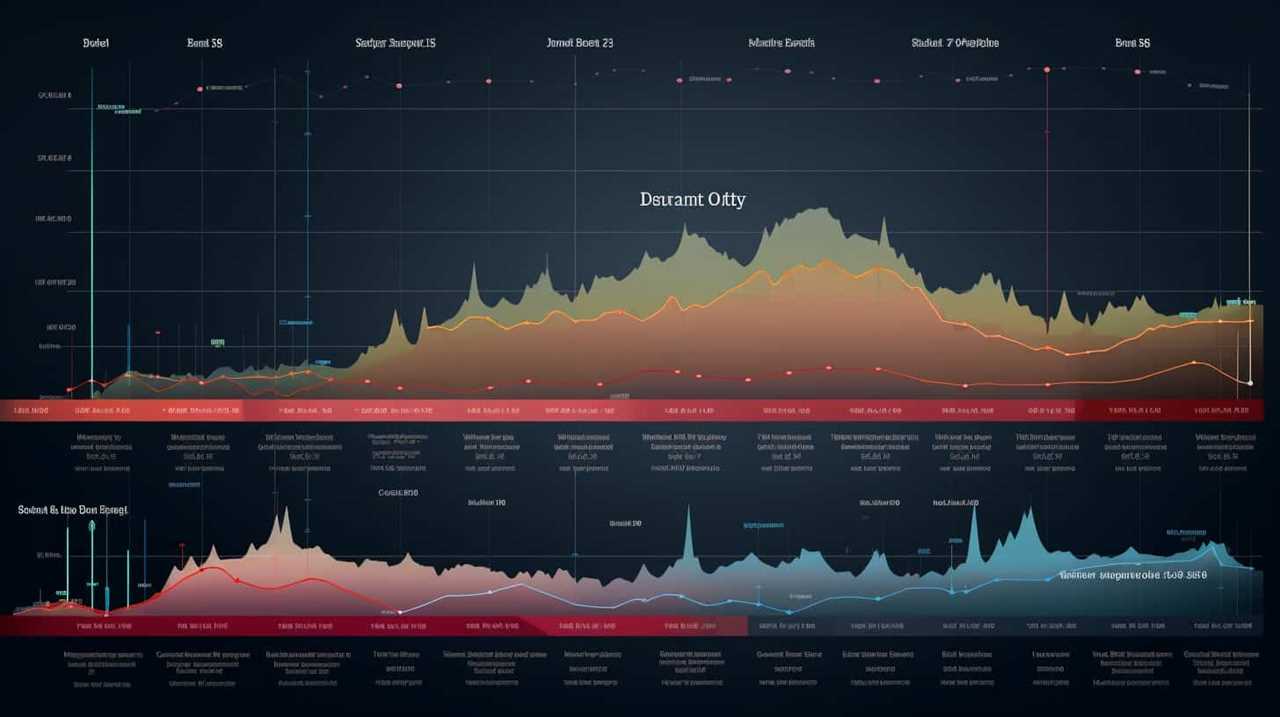
With a keen eye for analyzing and measuring our efforts, we can strategically optimize our website to attract maximum organic traffic and dominate the digital landscape.
Don’t settle for mediocre SEO, go all-in with holistic optimization and watch your website soar to new heights.
Holistic SEO
Impact of Social Media on Holistic SEO Practices

In the digital world, social media plays a crucial role in comprehensive SEO strategies. It helps enhance visibility, build brand awareness, and boost user engagement.
With its power to amplify content and strengthen online reputation, social media acts as a beacon, guiding our website towards higher search engine rankings and organic reach.
As we embark on this journey, let us delve into the symbiotic relationship between social media and holistic SEO, unveiling the impact it holds for our mastery in the digital realm.
Key Takeaways
- Social media platforms can be effectively utilized to increase visibility and brand awareness.
- Collaborating with influencers can boost brand visibility and reach a wider audience.
- Analyzing social media analytics helps to understand user behavior and optimize website traffic.
- Leveraging social media strategies can enhance SEO practices and improve search engine rankings.
Increased Visibility and Brand Awareness
To increase visibility and brand awareness, it’s essential that we utilize social media platforms effectively.
Social media advertising and influencer marketing play a crucial role in achieving these goals. By running targeted ad campaigns on platforms like Facebook, Instagram, and Twitter, we can reach a wider audience and increase our brand’s exposure. These platforms offer advanced targeting options, allowing us to reach specific demographics based on factors like age, location, and interests.
Additionally, collaborating with influencers who’ve a large and engaged following can significantly boost our brand’s visibility. Influencer marketing allows us to tap into the trust and influence that these individuals have built with their audience. By aligning our brand with influencers that resonate with our target market, we can increase awareness and credibility, leading to a higher likelihood of conversions and customer loyalty.
Improved Website Traffic and User Engagement
As we continue exploring the impact of social media on holistic SEO practices, it’s important to note how it contributes to improved website traffic and user engagement.
Social media analytics play a crucial role in understanding user behavior and preferences, allowing us to optimize our website to drive more targeted traffic. By analyzing data from social media platforms, we can identify the type of content that resonates with our target audience and tailor our SEO strategies accordingly.
Furthermore, influencer partnerships can significantly boost website traffic and user engagement. Collaborating with influencers who have a large following and influence in our industry can help us reach a wider audience and increase brand visibility. These partnerships can lead to higher engagement rates, increased website visits, and ultimately, improved search engine rankings.
With these tactics in place, we can ensure that our website receives higher traffic and engages users effectively. This sets the stage for the subsequent section on enhanced content distribution and amplification.
Enhanced Content Distribution and Amplification
We optimize our content distribution and amplify our reach through social media channels. By strategically targeting our outreach efforts and forming influencer partnerships, we ensure that our content reaches the right audience and receives maximum exposure. Through targeted outreach, we identify and engage with individuals and communities who are most likely to be interested in our content. This helps us connect with our target audience on a deeper level, fostering stronger relationships and driving higher engagement. Additionally, by partnering with influencers who have a strong following and influence in our niche, we are able to leverage their reach and credibility to amplify the distribution of our content. This results in increased visibility, brand awareness, and ultimately, higher conversions.
| Targeted Outreach | Influencer Partnerships |
|---|---|
| Identify relevant individuals and communities | Collaborate with influencers in our niche |
| Engage with target audience on a deeper level | Leverage their reach and credibility |
| Foster stronger relationships | Amplify distribution of content |
| Drive higher engagement | Increase visibility and brand awareness |
Strengthened Online Reputation and Credibility
Our strong online reputation and credibility are key assets in building trust with our audience. In today’s digital age, where information is readily available and opinions can spread quickly, it’s essential to manage our online credibility effectively. Reputation management plays a vital role in establishing and maintaining a positive image for our brand.
Here are four reasons why a strengthened online reputation is crucial:
- Increased trust: When our audience sees positive reviews, testimonials, and recommendations from others, it enhances their trust in our brand and establishes us as a credible source.
- Improved brand perception: A strong online reputation helps shape how our audience perceives our brand. Positive feedback and interactions can contribute to a positive brand image.
- Enhanced customer loyalty: When customers trust our brand, they’re more likely to stay loyal and recommend our products or services to others.
- Competitive advantage: In a crowded online marketplace, a strong online reputation sets us apart from our competitors. It gives us an edge and attracts potential customers who value credibility and reliability.
Boosted Search Engine Rankings and Organic Reach
Through the integration of social media, we can achieve higher search engine rankings and expand our organic reach. Social media advertising and influencer partnerships play a crucial role in boosting our website’s visibility and driving organic traffic.
Social media advertising allows us to target specific demographics and promote our content to a wider audience. By leveraging the advanced targeting options provided by social media platforms, we can reach users who are more likely to engage with our website and increase our chances of ranking higher in search engine results.
In addition, influencer partnerships enable us to tap into the existing follower base of popular influencers. By collaborating with influencers who align with our brand values, we can leverage their influence to reach a larger audience and drive more organic traffic to our website. This increased visibility can lead to higher search engine rankings, as search engines often prioritize websites with higher organic traffic.
Frequently Asked Questions
How Can Social Media Impact the Overall Visibility and Brand Awareness of a Business?
Social media’s impact on brand perception and leveraging social media influencers for business growth are key factors in increasing overall visibility and brand awareness. These strategies are essential for holistic SEO practices.
What Strategies Can Be Implemented to Improve Website Traffic and User Engagement Through Social Media Platforms?
To improve website traffic and user engagement through social media platforms, we can implement strategies such as website optimization and social media advertising. These tactics can increase visibility and attract more visitors to our site.
How Does Social Media Contribute to Enhanced Content Distribution and Amplification?
Social media reach is crucial for content amplification. It helps in enhancing content distribution by reaching a wider audience, increasing visibility, and driving traffic to websites. Social media’s impact on content amplification cannot be underestimated.
What Are Some Effective Ways to Strengthen Online Reputation and Credibility Using Social Media?
To build trust and establish authority using social media, we focus on strategies like consistently sharing valuable content, engaging with our audience, and showcasing positive customer testimonials. These tactics enhance our online reputation and credibility.
Can Social Media Efforts Alone Boost Search Engine Rankings and Organic Reach, or Should They Be Combined With Other SEO Practices?
Social media efforts alone may not boost search engine rankings and organic reach. Combining them with other SEO practices is crucial. Integration between social media and SEO is necessary for effective results. Social media analytics and measurement play a significant role in achieving mastery.
What Are the Key Ways That Social Media Influences Holistic SEO?
Social media’s impact on holistic seo is substantial. Firstly, it enhances website visibility by allowing businesses to share content and engage with their audience. Secondly, social signals from platforms like Facebook and Twitter contribute to search engines’ ranking algorithms. Lastly, social media drives organic traffic, which increases the likelihood of gaining quality backlinks. Overall, integrating social media into SEO strategy is essential for online success.
Conclusion
In conclusion, the impact of social media on holistic SEO practices is undeniable.
By leveraging social media platforms, businesses can increase their visibility and brand awareness, drive more website traffic and user engagement, distribute and amplify their content, and strengthen their online reputation and credibility.
This ultimately leads to boosted search engine rankings and organic reach.
Social media is like a powerful engine, propelling businesses towards their SEO goals with speed and efficiency.
-

 Expert Content Authority3 months ago
Expert Content Authority3 months agoThe Pillar of SEO: Why Content Consistency Matters Most
-

 Learning Center3 months ago
Learning Center3 months agoUncover How To Use ChatGPT to Write Effective Ad Copy
-

 Learning Center3 months ago
Learning Center3 months agoAI in 2024: 10 Things We are NOT Looking Forward To
-

 Holistic SEO2 hours ago
Holistic SEO2 hours agoHolistic Local SEO Tactics for Small Businesses
-

 Learning Center3 months ago
Learning Center3 months agoOptimize Your Digital Experience with Akamai CDN
-
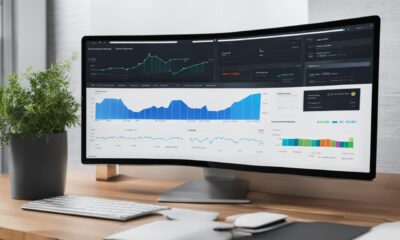
 Learning Center3 months ago
Learning Center3 months agoUnbiased RankerX Review: A Deep Dive into Its SEO Capabilities
-

 Holistic SEO3 months ago
Holistic SEO3 months agoMoney Robot Review [2024]
-

 Learning Center3 months ago
Learning Center3 months agoExperience How GPT-4 Turbo Beats Claude 2: A Review

















